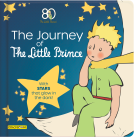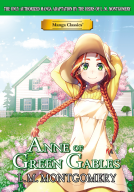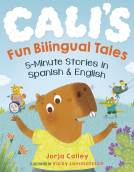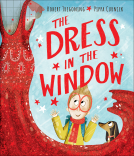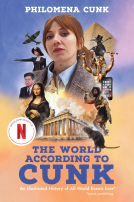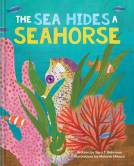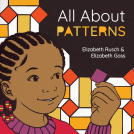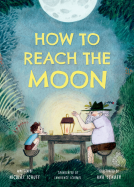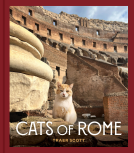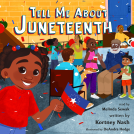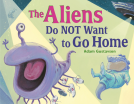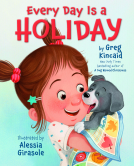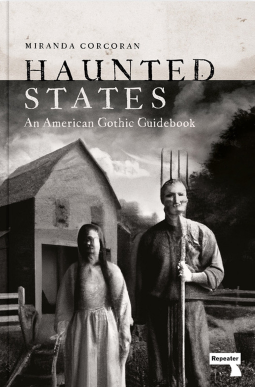
Haunted States
An American Gothic Guidebook
by Miranda Corcoran
This title was previously available on NetGalley and is now archived.
Send NetGalley books directly to your Kindle or Kindle app
1
To read on a Kindle or Kindle app, please add kindle@netgalley.com as an approved email address to receive files in your Amazon account. Click here for step-by-step instructions.
2
Also find your Kindle email address within your Amazon account, and enter it here.
Pub Date Oct 08 2024 | Archive Date Dec 12 2024
Repeater Books | Repeater
Talking about this book? Use #HauntedStates #NetGalley. More hashtag tips!
Description
Haunted States is a unique guidebook that explores the dark, often horrifying, history of the US. Based on the author’s journey across the United States in summer 2022, it explores locations connected to Gothic fiction and film, tracking the relationship between the American landscapes and the various forms of fictional horror the nation has produced over the centuries.
Part cultural history and part travelogue, Haunted States traces how the American Gothic draws inspiration from the natural and built environments, with the astounding geographical variation of the landscape influencing the distinctive forms of horror produced across its many diverse regions. The book also investigates how the horrors of the American Gothic have their roots in the nation’s dark history of colonialism, slavery, violence and oppression – past sins that continue to haunt the national consciousness to this day. Taking horror (in literature, film and the visual arts) as its starting point, Haunted States investigates the landscapes, places and cultures that produced it.
Incorporating first-person travel narrative, historical context and supplementary interviews, Haunted States journeys across the USA to learn about its eclectic, regional forms of horror.
Available Editions
| EDITION | Other Format |
| ISBN | 9781914420320 |
| PRICE | $16.95 (USD) |
| PAGES | 352 |
Available on NetGalley
Featured Reviews
I thoroughly enjoyed this one! There was so much love and research poured into this, I could tell how much Corcoran put into this. The book explored so much of America’s history, through folklore, ghost stories and true crime that became folklore over time. The incorporation of societal horrors contrasting against more fictional ghost stories was a really interesting addition. Overall, this was an incredibly well researched book, I really felt like I was touring America and it’s confusing, haunted history with the author. And I learned a lot too!
 Dan O, Bookseller
Dan O, Bookseller
My thanks to NetGalley and Repeater Books for an advance copy of this book that looks at how the geography of the United States and history of the lost, the unremembered, the forgotten and those the victors pushed to the side, have influenced the art of horror in literature and thought, and the dreams of how America views itself.
I've lived in Connecticut for most of my life, but I think I've only passed through Sleepy Hollow New York and maybe went to Salem Massachusetts on a field trip, maybe a family vacation. I have always been drawn to the paranormal, books, movies, comics, music, have been a mainstay since I found a book about hauntings in my children's library. However my interest is not in the tourist sense. I've worked with people who love to do this. Go to Amityville to see the house. Do a Headless Horsemen tour, go to Salem on the Witch's Eve. I know places have energy, and sometimes that energy can be strong. And unsettling. However after reading this book a combination of biography, history and tour guide, I might have to make an exception. Haunted States: An American Gothic Guidebook by Miranda Corcoran is a view of America through its actual history and our paranormal one, and how these influences affected literature and the stories America tells about itself.
Miranda Corcoran is from Ireland, a place that she writes gives her a lot of leeway in America as many have such a fantastic view of it. After a introduction discussing books, and horror genres and America in general, we read how Corcoran crosses the border from Canada to Niagara Falls, using her own feet which makes her a stranger in this country. The book becomes a tour of America broken into four parts, New England, the South, the West, and of course California. Corcoran moves across this country in ways that are familiar to Europeans, exotic to Americans; by train, bus, ferry Uber and taxi. Corcoran hits all the big places, spending time learning about witches in Salem, Edgar Allan Poe, Voodoo, the South, and the cult of course the best coast, California. Along the way Corcoran writes about she sees, and how writers and artists have been influenced by this history, the American Gothic that remains so popular today.
I book that was not what I expected, but a book that I found really hit me in a lot of spots. I love history, love books, love to read about writing. This book did all this. And more. Corcoran is a really good writer, and as an outsider to America, being Irish and a person who does not drive, really gets to see America as even few Americans see it. From bus stations, ferry stops, train stations and more. Along with this Corcoran sees America through her feet walking and paying attention, rather than paying attention to a GPS giving directions. I enjoyed her take on the standard places, Salem and the like. However it is the small places, the ones with historical markers grown over by weeds, that are the most interesting and revealing. Graveyards for left do decay, numerous massacres and battles. Corcoran has a very good writing style, and I enjoyed the mix of history and paranormal. Also I enjoyed the lack of ghost hunting bro writing. No ghost detectors, no speakers, no ultrasound. Just a person walking, listening, learning and sharing.
A fun book for travellers, the paranormal interested, horror fans, and people who just like good writing. Sort of a Paul Theroux of the shadow world, without all the grumpiness. I really enjoyed this book and would like to read more by Miranda Corcoran.
 Reviewer 1156620
Reviewer 1156620
Interesting, entertaining, and incredibly well written. Corcoran takes us on a journey all the way around the United States of America, from East to South, across to the West, and back again, exploring each territory's own Gothic histories.
This was really well-researched, and I loved the fact she designed it to read as a travel log. If you’re interested in the Gothic, particularly pertaining to American culture, this is a must read. It covers everything from witches and folklore, Voodoo and the undead, monsters and mushroom clouds, to celebrity murders and cults.
I’m already familiar with Miranda Corcoran’s scholarship, so I jumped at the opportunity to read this. I will read anything she writes! Maybe a guidebook of her own haunted homeland (Ireland) next? Let’s hope.
This was a pleasure to read and review. Many thanks to @netgalley and @repeaterbooks for allowing me to read this early copy in exchange for my thoughts.
 Reviewer 1189404
Reviewer 1189404
This is an excellent book for the upcoming spooky season. Miranda Corcoran produced a part-travel account, part-cultural criticism book about the American Gothic. The book is not a guide to American locations associated with specific hauntings, as it might seem at first. Rather, Corcoran describes her journey through five specific locations associated with very particular iterations of American Gothic - ghostly New England, vampire and African American spirituality fuelled Southern Gothic, atomic New Mexico and Nevada and Hollywood/cult focused California, with a surprising bonus chapter on the Midwestern Gothic. In each location, Corcoran explains the location-specific iteration of Gothic through an analysis of various literary and film examples of these trends, with a hefty dose of historical context and background.
Look, I lap up books like these, and this one is very well put together. It assumes no prior knowledge of the subject, so it might not be of much interest to professional scholars or very well-read enthusiasts of the American Gothic. However, Corcoran does an excellent job of providing a concise yet wide enough selection of scholarship on the distinct subjects she chose to cover. The book never feels like just her own analysis, not grounded in previous research, she always gives credit where it is due (some authors of trade books like these cite no one and pretend by assumption to be the first people to have come up with the ideas they discuss). The bibliography occupies about 10% of the book, and as someone without prior comprehensive knowledge of the topics I found it very inspirational, there are quite a few books in it I now want to pick up (both primary and secondary sources). Corcoran covers a very impressive breadth of subjects, from the memory of Salem Witch Trials and the woes of Edgar Allan Poe to Zora Neale Hurston's anthropological work and 'desert horror' movies such as The Hills Have Eyes. I didn't want this book to end, and I stretched it out as much as I could.
In addition to cultural analysis, it is a very interesting travelogue of the USA. The author does not drive, so she primarily took busses on her epic journey from Niagara Falls to San Francisco via New York, New Orleans, Texas, New Mexico and Los Angeles (and back to New York via the Midwest, with some stops in Iowa and Chicago). She shows the sort of America one sees on these busses, the type of America most Americans will probably never get to see.
Although I want to give this book 5 stars, as I enjoyed it a lot, I had a couple of pretty serious issues with it.
Some minor issues first. Corcoran is fantastic at evoking a sense of place and making the chapters very distinct. The atomic chapter in particular was the one I learned most from, as I rarely think of atomic horrors as a part of the Gothic. The introduction implied the chapter would cover UFOs, and it doesn't, which made me a bit sad, as that chapter was by far the shortest (sans the Midwestern epilogue), so I felt like there could have been some extra material in it. Some of the analysis is also quite repetitive. It felt a bit like the author was told to make it more accessible, so they stressed the key points a tad more often than most readers would need.
Now we come to the meatier ones. Corcoran does generally a good job of emphasising the bloody past and present of the USA, especially in relation to race. However, the range of texts she covers does not always reflect her vocalised commitment to antiracism. Although she covers a couple of seminal Black authors and texts (Beloved, Their Eyes Were Watching God), most of the cultural output she discusses in detail was produced by white writers and filmmakers. It is especially jarring in her treatment of Indigenous themes - she fully acknowledges the genocide of Indigenous people, and yet she never includes Indigenous perspectives on the American Gothic (Indigenous horror is an absolutely thriving genre, throughout the 20C and especially now). In this book, Indigenous people are designated to the role of a passive victim, whose slaughter is to be reckoned with in white people's Gothic. Her choice to stick with the term 'Voodoo' as a descriptor for some forms of Southern Black spirituality (even though she did acknowledge its racist connotations) also raised my eyebrows.
Although she spoke of America's bloody past and sins, she rarely brought up specific issues with the individual authors she discussed (and the ways in which those issues impacted their work). Just by reading this book, we would never learn of Lovecraft's rampant racism or Poe's child bride (he was 27, she was 13 when they married, and all we learn from the book is his grief at her passing). These are not 'minor points' about these authors, they are integral to their experiences, their personalities and their work, ultimately, they're inseparable from their versions of the American Gothic.
With these issues in mind, this is still a very worthwhile book which I am popping onto my Christmas list as I want a paper copy in addition to my electronic one. If you liked Edward Parnell's Ghostland or Matthew Beaumont's Nightwalking, this is a perfect read for you.
Thank you NetGalley and Repeater Books for the e-ARC in exchange for an honest review.
An engaging exploration of America's supernatural folklore. I particularly enjoyed how the book felt like a travel guide for the paranormal, taking readers on a journey across haunted locations and eerie landmarks in the United States. Corcoran’s research is thorough, yet her writing is accessible, making it easy to imagine these chilling sites. She weaves historical context and local legends seamlessly, providing fascinating insights into the myths and stories that shape the culture of each region.
As someone not originally from the States, Corcoran is able to provide fresh observations and perspectives, often pointing out the quirks and contradictions in American ghost stories that a native author might overlook. Her outsider’s view adds depth to her commentary, giving the reader a more objective and sometimes humorous take on how we approach the supernatural. While I wished for a bit more narrative flow at times, overall, Haunted States is a compelling and informative read for anyone interested in paranormal history or unique travel experiences.
 Reviewer 936305
Reviewer 936305
I have thought extensively about the regional differences in the paranormal and hauntings. This book took every one of those thoughts and presented them in a well-researche, easy-to-follow guide. The travelogue style and conversational tone make this book very accessible and well-organized. I found the topic fascinating and the presentation engaging. This book is a little prone to tangents and wondering prose, but I did not feel that that distracted from the reading experience. I really enjoyed this book as both a historian and a paranormal enthusiast.
"Haunted States" is an incredibly fun take on American ghosts by an Irish woman with a good sense of humor. Divided by different locations, Corcoran is no fluff-writer; she's interested in the history behind these places as much as the ghosts, but it's her lively, engaging writing style that makes this one a nonfiction winner. I recommend this one to fans of Caitlin Doughty - it's got a similar morbid, educational, and fun vibe.
This is a great read. A travelogue, selected history, and cultural criticism/exploration all in one. Corcoran is from Ireland and her impressions of America are fascinating and very well written.
I expected this to be more focused on the spookier aspects of her journey across the United States, but it's so much more than ghost stories of America. Corcoran takes stock of American history and appreciates individual Americans. It's such a fun book.
Highest recommendation if this sounds like your style.
Thank you NetGalley and Repeater Books for the ARC.
This book traces the history of the United States in its geographical landscapes & how these have influenced its culture. The Gothic genre found in British novels is different to American Gothic, & the author posits that America is haunted by its own past & history, even if these take very different regional forms. Travelling from the East coast to the West, from Lily Dale, NY, to LA & San Francisco, Corcoran explores the origins of Spiritualism, the witch trials, & the legends of vampires & zombies. Discussing the works of authors such as Shirley Jackson, Edgar Allan Poe, to Anne Rice, the author asks the reader to examine the America beneath the surface.
This was a really interesting read - I'd never heard of Lily Dale before & it sounds a fascinating place. I also really enjoyed the sections on Sleepy Hollow, Poe, & LA, but I must be honest, I didn't think that the chapter on Texas & Nevada & the atomic legacy worked as well as the others. To me it seemed slightly incongruous alongside the other topics. Overall though it was very informative & gives the reader a lot to think about. 3.5 stars (rounded up)
My thanks to NetGalley & publishers, Repeater Books, for the opportunity to read an ARC.
 Reviewer 876149
Reviewer 876149
Definitely not for anyone clinging to notions of America as synonymous with freedom and a chance at the good life. America as witnessed by academic Miranda Corcoran leans more towards read-it-and-weep, despite the odd flash of fragile optimism. Corcoran’s compelling, accessible blend of travel memoir and cultural analysis revolves around the American Gothic. For Corcoran American Gothic isn’t fixed but metamorphic, responsive to places and histories. She leaves Ireland for America to test out theories about its shifting forms, from its influence in literature to cinema and TV. She’s fascinated by relations between context and content, changing landscapes replete with their own brand of insidious anxiety: fleshy monsters formed in Southern swamplands; the conjurings of mediums and restless ghosts pervading New England; the mutated forms crawling forth from deserts scarred by nuclear testing.
Corcoran visits Lily Dale centre for American spiritualism where ghosts often had positive meanings. Women who channelled them, like the Fox sisters, the first to enter public speaking in 19th century America, the spirits they claimed to represent stirred up hope for a vibrant afterlife. A belief that Corcoran views as bound up with the area’s status as frontier region, attracting people in search of a brighter future. In contrast Hudson Valley’s revenants testify to legacies of war, the abuses of the past. Known for its diverse settlers bringing with them a rich store of European folklore and legend; its weather, its eerie mists, suggest weird things lurking in the shadows. Some are possibly remnants of half-submerged guilt stemming from the brutal colonisation and extermination of Indigenous peoples. In Salem Corcoran’s confronted by bizarre juxtapositions, solemn memorials to those who died during its infamous witch trials jostle with shops hawking witch-y merchandise. It's a tourist spot made popular by fans of Bewitched a kitschy show about a suburban mother with magical powers. But it also inspired Hawthorne and laid the foundations for Lovecraft’s sinister Arkham.
Wanderings through Vermont highlight the peculiar nature of American hauntings, an emphasis on domestic spaces, the houses integral to achieving the “American Dream.” Brickwork that oozes with desire and malevolence outlined in Shirley Jackson’s Bennington-based fiction - written when home for many American women was equivalent to a prison. Jackson was all too aware of Bennington's reputation for the unexplained: from vanishings to cryptids, even carnivorous stones. For Corcoran Virginia’s associated with tangible, visceral beings, Poe’s prematurely-buried women, vampires and undead weighed down by history. Many festering and reeking in its swamps and wetlands. References to the oral cultures of the enslaved detected in Poe’s work then direct Corcoran to Eatonville. A small town founded by emancipated slaves, where Zora Neale Hurston once lived, it highlights America’s violent divides. Here the swamp’s a site of resistance, hiding place and sanctuary. Resistance is paramount in New Orleans’s embrace of so-called “voodoo.” Vilified in white narratives, for its followers it symbolised a refusal to abandon their heritage. In New Orleans, Corcoran reflects too on the work of Jewelle Gomez and Anne Rice. Fiction whose messages counter the lament for the Antebellum South found in Charlaine Harris’s vampire novels.
Demons, devilry, and denial mark out California and the iconic Midwest. Corcoran’s travels through Texas, Nevada and New Mexico construct a persuasive account of techno-militaristic policies that birthed monsters and mushroom clouds. Entering Texas, Corcoran’s struck by the fact that meat is everywhere: highways festooned with animal skulls, flashes of pastureland where cows wait for death. Inevitably, Corcoran connects these images to Tobe Hooper’s seminal horror The Texas Chainsaw Massacre a vision of America descending into chaos, disinterring its hastily-buried dead, exposing the rotting flesh beneath its shiny surfaces. In keeping with a state that’s essentially a scab formed over histories of extensive ethnic cleansing. Nevada and nearby deserts tell stories of devastated environments, shattered ecologies, Indigenous and Hispanic communities forcibly uprooted to make way for nuclear testing. Events that led to the oddly-beguiling, 1950s atom-age “bug” movies; and later Wes Craven’s arresting cannibal horror The Hills Have Eyes. Craven’s film highlights class injustices, sanctioned versus unsanctioned brutality. The all-American Carter family are the acceptable face of American perversity – the father delights in the vicious policing of people of colour - pitted against a mutated clan forged out of poverty and toxic waste.
I found Corcoran’s book’s incredibly readable, her imagery, her depiction of her encounters along the road, are lucid, inventive and insightful. Atmospheric, well-researched, engaged and occasionally provocative, highly recommended.
 Reviewer 632394
Reviewer 632394
A fusion of travel literature and cultural criticism investigating the dark history of the US and exploring how past horrors – from witch trials to slavery and genocide – continue to haunt the national consciousness.
This is an interesting guide book of some of America's darker history. Not all of it,mind you, but a good portion.
Corcoran visits the East, South,and west of the United States.
In the East she tackles what you would expect,the Gothic history of Massachusetts and Main. Limited iny opinion considering how much haunted and tragic history is in the surrounding states like New York, Pennsylvania,and even New Jersey. She goes the typical route and visits Salem and gives her commentary on the witch trials.
I'm not sure she painted Salem, Massachusetts in a very good light, making it seem like a cheesy tourist fleecing place thena spot of historic significance.
From here she heads south to Richmond, Virginia and gives a very interesting speech about Edgar Allen Poe and slavery.
The horror of slavery will always be present in the south no matter how hard they try to white-wash that history but I was expecting stories of haunted locations.
In the West, California and Vegas with and the lore and scandals there. Very interesting stories of the days of nuclear test and their legacy as well as how they lead to classic horror movies such as The Hills have Eyes and Texas Chainsaw Massacre.
Again not was I was hoping for but interesting nonetheless.
It's a very well written book by an obviously intelligent writer who did her research. You can tell she is an educator as the book takes on the feel of a college text book.
But if your expecting Halloween scares to share around a fire you won't find them here. This is not your typical
Haunted tales reference book.
Not sure how I feel about that but I can't deny this was a interesting read.
Recommended for those wanting more educational than titillating.
Thanks to @netgalley and Repeater Books for the opportunity to read this eArc in exchange for my honest and unbiased opinion.
 Reviewer 1474393
Reviewer 1474393
Miranda Corcoran’s Haunted States offers a compelling blend of travelogue and cultural criticism, bringing together history, geography, and Gothic horror to explore the dark undercurrents of the American landscape. The book is not your typical guide to haunted houses or ghost stories; it dives much deeper, revealing how the terrifying parts of America’s past—witch trials, slavery, genocide—continue to cast shadows over the nation’s collective consciousness and cultural productions.
Corcoran’s journey across the United States in the summer of 2022 becomes the lens through which she explores the relationship between real historical horrors and the fictional Gothic traditions of American literature and film. The book’s structure weaves together personal travel narrative with historical context, seamlessly integrating interviews and observations about specific locations. These include places that have inspired famous works of Gothic fiction and horror cinema, such as New England, the South, and the West, where each region’s unique landscape has shaped its distinct Gothic tradition.
What sets Haunted States apart is its exploration of how the physical geography of America informs the horror genres that emerge from each region. Corcoran shows how the desolate expanses of the West give rise to tales of isolation and madness, while the South’s tangled history of slavery and racial violence fuels a distinctly Southern Gothic, filled with haunting specters of the past. Her insights into how the landscape shapes horror are thought-provoking and often eerie, making readers look at familiar genres in a new light.
The book also critically examines how America’s Gothic imagination is tied to the country’s darkest histories of oppression, violence, and colonialism. Corcoran doesn’t shy away from confronting how horrors like slavery and the displacement of Indigenous peoples have left their mark on the national psyche. These historical traumas are revealed as the true ghosts that continue to haunt America, often more terrifying than any fictional monsters.
While Haunted States deals with weighty historical and cultural issues, Corcoran’s writing is accessible and engaging. Her first-person narrative, filled with vivid descriptions of her travels and the places she visits, adds a personal dimension that makes the history feel immediate and relevant. The supplemental interviews with locals, historians, and cultural critics provide additional perspectives, enriching the book’s analysis.
One of the strengths of Haunted States is its ability to speak to both academic readers interested in cultural studies and casual readers drawn to the American Gothic and horror genres. It invites readers to reconsider the landscapes they know and reflect on the unsettling realities beneath the surface of American history.
In conclusion, Haunted States is a hauntingly insightful work that combines travel writing with cultural critique, offering a fresh and critical look at how the horrors of the past continue to influence American art, culture, and identity. It is essential reading for anyone interested in the intersection of history, geography, and the Gothic, as well as those who want to understand how America’s landscapes are as haunted by real history as they are by fictional horrors.
This book is fantastic. It is a thorough exploration (and guide) to different areas of the vast US, searching for the creepy stories that shaped our nation and the intricate relationships between landscape, history and local lore. From the green forest of Vermont and the birth of spiritualism , to the arid desert of New Mexico with its almost Martian geography , going through the revenants who inhabits the Deep South bayous, and much more, this book makes you want to pack and start the ultimate American road trip. A real treat of a book!
 J. K, Reviewer
J. K, Reviewer
Thanks to the publisher and Netgalley for this eARC.
Miranda Corcoran’s “Haunted States: An American Gothic Guidebook” is a fascinating blend of travel literature and cultural criticism that delves into the eerie and often unsettling history of the United States. This guidebook is a journey through haunted locations and an exploration of the dark narratives that have shaped American consciousness.
The book is structured around Corcoran’s travels across the United States during the summer of 2022. Each chapter focuses on a different location, from the infamous Salem, Massachusetts, to the haunted plantations of the South. Corcoran investigates how historical events, such as witch trials, slavery, and genocide, have left an indelible stain on the places where these tragic miscarriages of justice occur.
Corcoran’s writing is engaging and informative, striking a perfect balance between storytelling and analysis. Her vivid descriptions bring each location to life, while her insightful commentary provides a deeper understanding of the cultural and historical contexts that contribute to the haunting atmosphere. The narrative contains anecdotes and personal reflections, making it a compelling read for both history and supernatural fans.
“Haunted States” explores themes of memory, trauma, and the lingering effects of past atrocities. Corcoran examines how these dark histories continue to influence contemporary American society and culture. This book delves into the concept of the Gothic as a means to view and understand these haunted landscapes, offering a unique perspective on the intersection of places and narratives.
“Haunted States” blends travelogue with cultural criticism. Corcoran addresses the uncomfortable truths about America’s past, and her analysis is thought-provoking and enlightening. She skillfully connects the dots between historical events and their representation in Gothic fiction and film, providing readers with a comprehensive understanding of how these stories impact societal views and fears.
“Haunted States: An American Gothic Guidebook” is a must-read for anyone interested in the darker side of American history and culture. Miranda Corcoran has crafted a book that is informative and captivating, offering readers a unique journey through the haunted heart of the United States.
Whether you’re a fan of Gothic literature, a history enthusiast, or simply someone who enjoys a good ghost story, this guidebook is sure to leave a lasting impression.
 Kerry B, Reviewer
Kerry B, Reviewer
This was an enjoyable and interesting read. I found the discussions of how these mythologies became prevalent depending on the part of the US, the historical context and the natural landscape playing a part. I especially found the conversation about the swamp leading to more heavy, ‘real’ monsters an interesting take. However, I did find there was less haunting stories than I would have liked. The Texas part especially showcased a lot of ideas that were repeated and repeated over again in a small section, as if Miranda was trying to hit a word count for the section. I also thought the Midwest section was way too short. Overall though, super interesting!
As someone who lives in the U.K. I’m more used to seeing books like this focused on the extensive history, folklore, myths and hauntings from here than anywhere else.
So I was extremely excited to receive the arc of this one. It did not disappoint.
The author has taken us on a journey across the USA, to these eerie, atmospheric and beautiful places.
What I like about this, is that it isn’t just generic “ghost/spooky” stories, it’s packed full of history and inclusive of the cultural elements that make up what is the USA today.
Fascinating and interesting, I had no problem getting into the book, I was engrossed from virtually the beginning.
Such a good, solid read. I’d highly recommend this one. Thank you so much for allowing me an arc, it’s much appreciated and enjoyed.
 Reviewer 1542354
Reviewer 1542354
Excellent book. It’s beautifully written and weaves in fascinating details about the gothic history of the U.S. I especially enjoyed learning how mediums and spiritualists played a crucial role in the suffragette and feminist movements. Such an interesting and unexpected connection!
Thank you to the publisher for providing this ARC in exchange for an honest review.
 Reviewer 142279
Reviewer 142279
A nice ride through haunted places in the US and a cultural voice of the country itself. I really enjoyed this book. Thanks to NetGalley, the author and the publisher for this free eARC in exchange for my honest opinion.
 Jude W, Educator
Jude W, Educator
Corcoran's hybrid travelogue, meditation, and critical analysis works exceptionally well as a way to delve into American culture through the Gothic myth-making of the countries various regions. It is theoretically sophisticated, but also clear in its leveraging of academic discourse. It features both beautifully wrought descriptions of travel across American landscapes and pertinent observations about American narratives and their connections to (or disconnections from, American realities). Corcoran's status as an outsider looking in on a country not her own is useful in illuminating areas that we might take for granted (including the notice of American transportation's unspoken hostility to the disabled and under-resourced). I'm well versed in books engaging in American psycho-geography, including the works of Colin Dickey, W. Scott Poole, and Leanna Renee Hieber, and Andrea Janes. Haunted States is one of the best I've read in this area of exploration and valuable addition to the field. .
I love a good anthology/collection of stories. This collection is full of history and fun little tidbits. You call tell that the author spent a lot of time researching the variety of historical topics. If you like history, gothic horror, and collections... read this. You'll be happy to have this on your bookshelf, as well.
#NetGalley #HauntedStates
 Reviewer 1320040
Reviewer 1320040
HAUNTED STATES by Miranda Corcoran is a travel journal through the US and finding the deeply dark and mostly horrifying history of the US. She connects it to film, history, and social issues in a way that feels uniquely fresh and terrifying.
I particularly loved the section following the southern US through Texas for all the personal reasons. My family is buried in cemeteries between Mobile, New Orleans, and east Texas, so it felt quit eerily cozy to read about the conditions in these places where my own problematic heritage lies. Seeing these places through the eyes of someone from Ireland was also quite intriguing, especially the social aspects of travel and life in the deep south.
Corcoran's writing is deeply rich, very much living up to the gothic vibe of the whole book. The way she describes details as simple as the heat she's feeling or the state of the world in the 1970s is fascinating. I found myself drawn into every word, wanting to marinade in the environment that she was experiences that is familiar to me, yet a complete stranger through her eyes.
The book is very knowledge and it's obvious the amount of care and research that went into it. Corcoran handles sensitive topics with a level of care that respectful and intimate.
 Reviewer 984890
Reviewer 984890
Corcoran has such a wonderful, poetic way of describing each American state she visited. She had a real understanding of the areas, the people, customs, the past, and stories within. I thoroughly enjoyed every page of this book. Corcoran's will and determination and patience to engage with people and hear their stories - past and present was truly what made the book so readable. It gave such an insight into an America we wouldn't usually see or hear about. Haunted States shows how entwined the past and the present are. With ghosts, the uncanny, being the connection between now and an, at times, uncomfortable past. I recommend this book to everyone, it won't disappoint. A well deserved 4 stars.
 Lisa D, Reviewer
Lisa D, Reviewer
I built a house on a piece of land in a city where there was no history of other homes being built. It was a weird feeling, because it felt like there was no history there, where most of the US is full of stories and ghosts. Corcoran knows how to find the record of these ghosts, Corcoran is a great researcher and she combines lore with personal experience and interviews to portray the underbelly of the land, going to several unique places in the country. This is a fun book for anyone who loves history or ghosts or travel memories. Thanks to NetGalley for letting me read this.
Readers who liked this book also liked:
Sara T. Behrman
Children's Fiction, Outdoors & Nature, Parenting & Families
